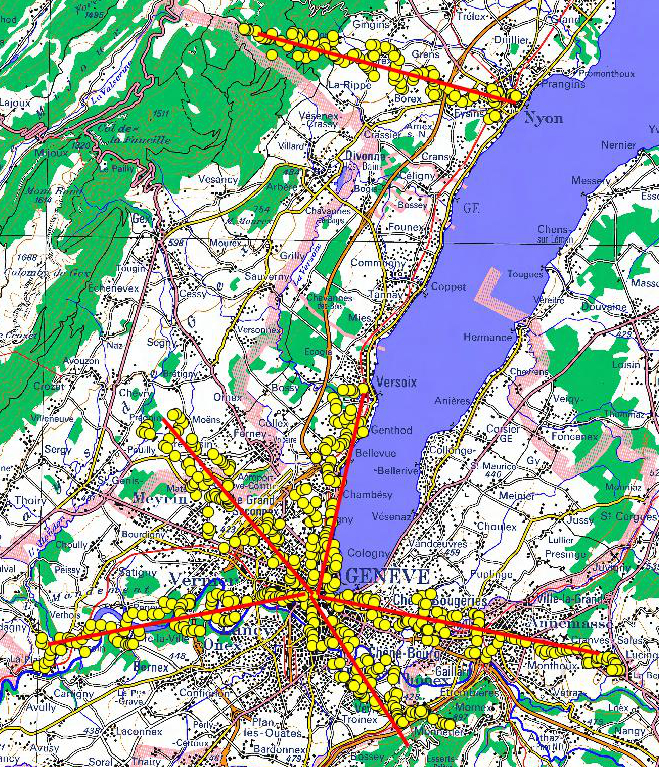Several basic constraints shape the sampling structure. It is necessary firstly to target new urban developments to obtain measures of genetic diversity in the immediate vicinity of the works.
It is also expected to sample in the main breeding sites of amphibians. These sites will be supplemented with private ponds whose location – and whose temporary availability for sampling – will be surveyed as part of a geo-crowdsourcing operation in preparation (see an example here of the Atlas of Living Australia).
Six transects along which most of the sampling will be carried out were determined (see map below), two of which are altitudinal between Nyon and La Dole, and between Geneva downtown and Le Salève. It is important to note that the transects are an indication of the main axes, but that sampling could overflow within a buffer zone of one kilometer roughly, according to sampling opportunities and thus provide an optimal spatial distribution.

Red lines represent the 6 transects along which sampling will be carried out. Yellow dots represent the 600 Plantago major individuals that have been sampled during the summer 2013 (for an interactive map see here).